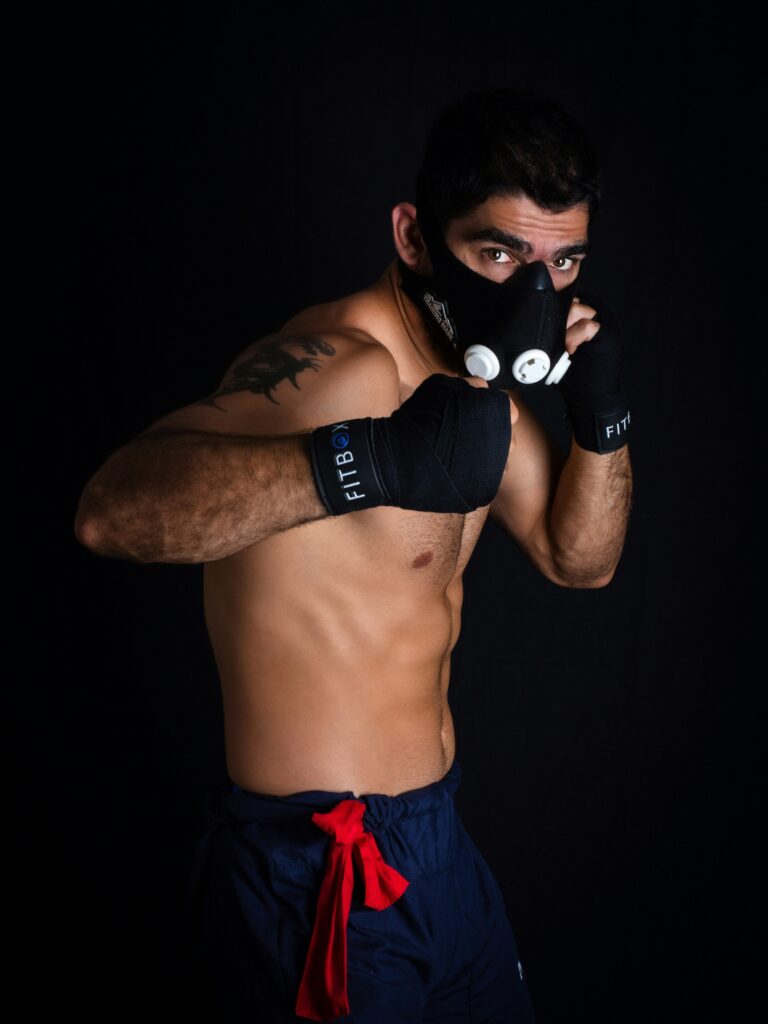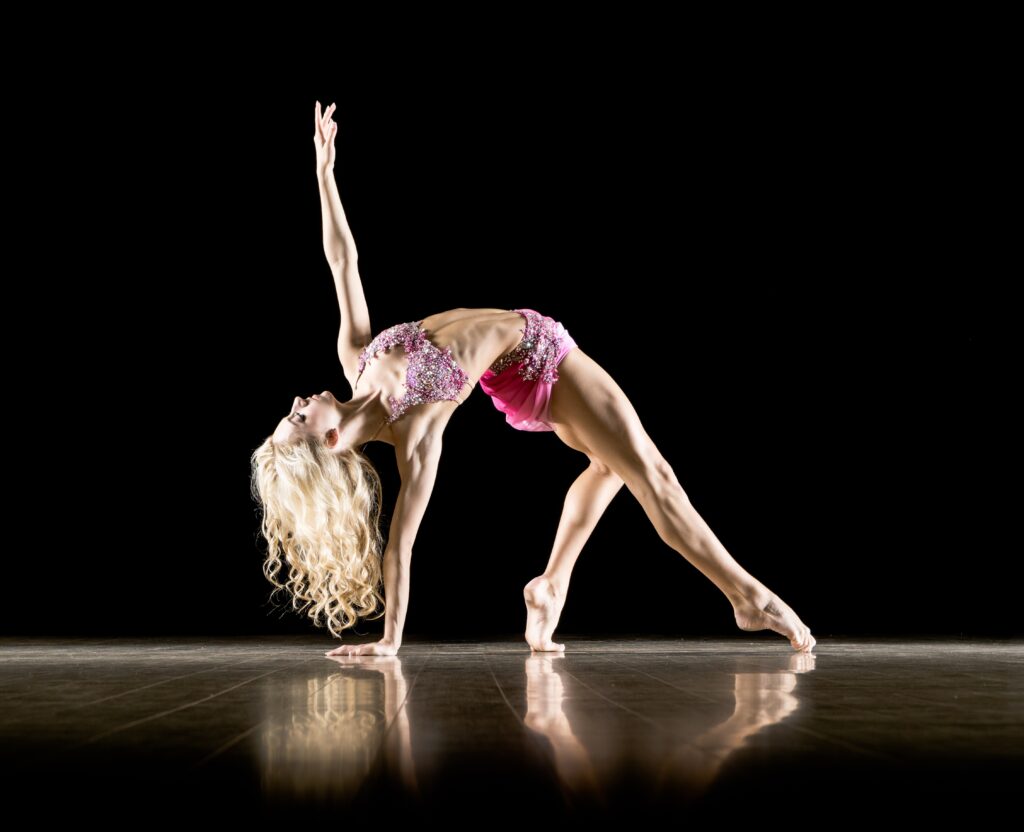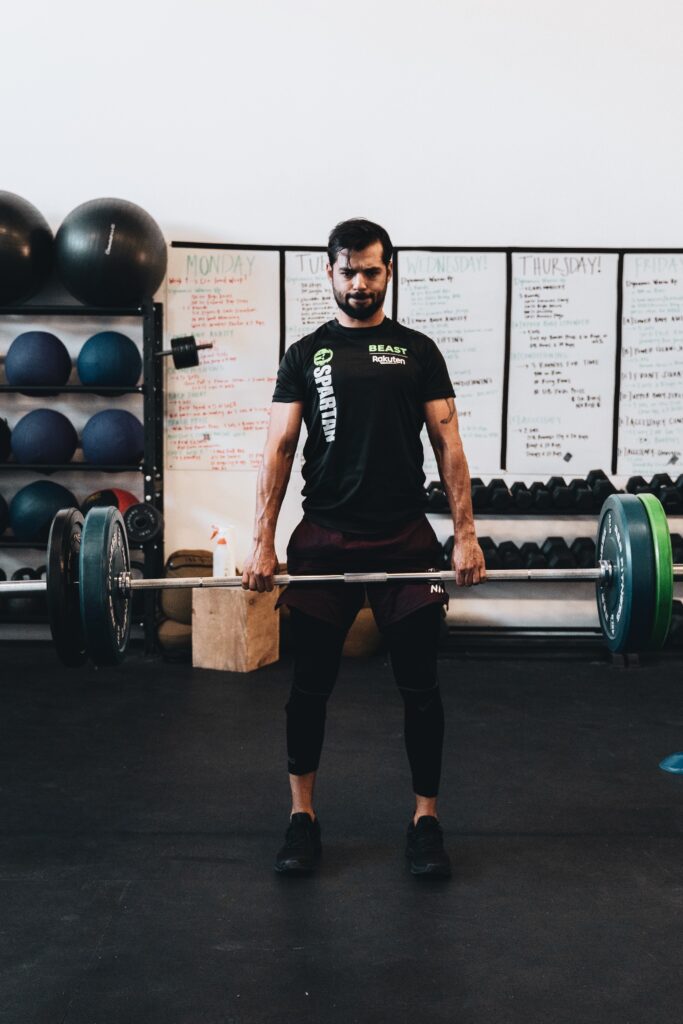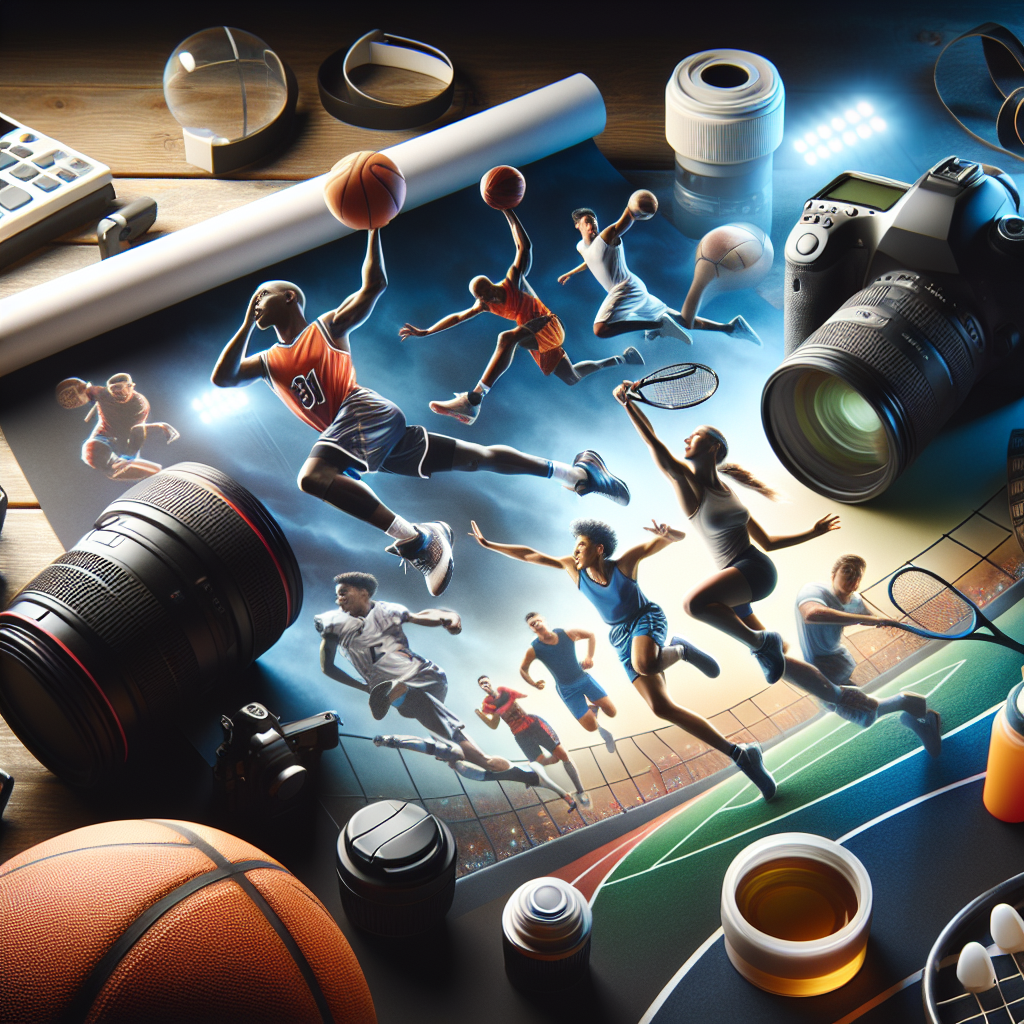Ready to capture the action? Look no further! In this article, we’ll be sharing some valuable tips and techniques to help you excel in the world of sports photography. Whether you’re hoping to capture your favorite athletes in their prime or document the exhilaration and intensity of a sporting event, this guide will equip you with the knowledge and skills to create stunning and captivating images. So grab your camera, get ready to immerse yourself in the thrilling world of sports, and let’s dive into the wonderful realm of sports photography together!
Understanding the Basics
Choosing the Right Equipment
When it comes to sports photography, having the right equipment is crucial in capturing those action-packed moments. While professional-grade cameras and lenses are ideal, you don’t necessarily need the most expensive gear to get started. Look for a camera that has a fast autofocus system and a high burst rate, as these features will help you capture fast-moving subjects. Additionally, consider investing in a telephoto lens with a long focal length, as it will allow you to zoom in on the action from a distance.
Understanding Your Camera Settings
Before diving into sports photography, take the time to familiarize yourself with your camera’s settings. Knowing how to adjust parameters such as aperture, shutter speed, and ISO will give you greater control over your images. In fast-paced sports, a high shutter speed is often necessary to freeze the action, while a wide aperture can create a shallow depth of field and isolate your subject. Experiment with different settings to find the optimal balance for each sporting event you photograph.
Mastering Focus and Exposure
Achieving sharp focus and proper exposure is paramount in sports photography. To ensure accurate focus, use the continuous autofocus mode on your camera and track the subject as it moves. This will help you maintain sharpness throughout the frame, even during rapid changes in direction. As for exposure, sports venues often have challenging lighting conditions, with bright spotlights and stark shadows. Use your camera’s exposure compensation feature or spot metering to adjust the exposure settings accordingly and avoid underexposed or overexposed images.
Preparation and Planning
Researching the Sport and Venue
Before you head out to photograph a sporting event, take the time to research the sport you’ll be capturing. Understanding the rules, key moments, and the flow of the game will give you an advantage in anticipating and capturing impactful moments. Additionally, familiarize yourself with the venue where the event will take place. Knowing the layout, seating arrangements, and potential vantage points will help you plan your shots and make the most of your equipment.
Scouting the Location
Arriving early at the venue and scouting the location is essential for a successful sports photography shoot. Look for prime shooting positions that offer unobstructed views of the action. Pay attention to the background, as a cluttered or distracting backdrop can take away from the main subject. Take note of any potential obstacles or obstructions that may interfere with your shots and plan accordingly. By familiarizing yourself with the location, you’ll have a better understanding of where to position yourself to capture those game-changing moments.
Knowing the Rules and Strategies
To capture the decisive moments in a game, it’s important to have a good understanding of the sport you’re photographing. Being aware of the rules, strategies, and key players will allow you to anticipate actions and reactions, increasing your chances of capturing compelling images. By immersing yourself in the sport, you’ll be better equipped to predict when and where exciting moments will occur, enabling you to be in the right place at the right time.

This image is property of images.unsplash.com.
Composition and Framing
Finding the Right Angle
When photographing sports, finding the right angle can make a significant difference in the impact of your images. Experiment with shooting from different viewpoints to capture unique perspectives. Shooting from a low angle, for example, can make athletes appear larger-than-life and create a sense of power and intensity. On the other hand, shooting from a high angle can provide a comprehensive view of the entire playing field, showing the scale and complexity of the sport.
Exploring Different Perspectives
Don’t be afraid to get creative with your perspectives when shooting sports. Aside from the typical sideline shots, consider climbing to higher vantage points or positioning yourself behind the goalposts for a different viewpoint. By capturing the action from unexpected angles, you can add variety and intrigue to your shots, making them stand out from the crowd. Experiment with different perspectives to find the ones that best capture the energy and excitement of the sport.
Using the Rule of Thirds
The rule of thirds is a fundamental composition technique that can greatly enhance the visual impact of your sports photos. Imagine dividing your frame into a grid of three vertical and three horizontal lines. By placing important elements, such as the athlete’s eyes or the peak of action, along these gridlines or at their intersections, you create a more balanced and visually appealing composition. This technique draws the viewer’s eye to the main subject and adds a sense of depth to the image.
Freezing the Action
Selecting the Right Shutter Speed
One of the key challenges in sports photography is capturing sharp, frozen moments amidst fast-paced action. To achieve this, you’ll need to select the appropriate shutter speed. Generally, a shutter speed of 1/1000th of a second or faster is recommended for most sports. However, depending on the sport and the desired effect, you may need to experiment with slower or faster shutter speeds. For example, a slower shutter speed can be used to capture intentional motion blur, while a faster speed is necessary for capturing crisp action.
Using Burst Mode
Sports photography often involves capturing split-second moments that can be missed in the blink of an eye. Burst mode, also known as continuous shooting mode, is a valuable tool that allows you to capture a rapid series of images with just one press of the shutter button. This feature is especially useful when photographing fast-moving subjects, as it increases your chances of capturing the perfect action shot. By shooting in burst mode, you can select the best frame from a sequence of images, ensuring you don’t miss any crucial moments.
Capturing Motion Blur
While freezing the action is important in sports photography, sometimes adding intentional motion blur can convey a sense of speed and energy. To achieve this effect, experiment with slower shutter speeds and follow the moving subject as you press the shutter. The background will become blurred while the subject remains relatively sharp, creating a dynamic image that captures the fast-paced nature of the sport. Remember to use a tripod or stabilize yourself to avoid camera shake when shooting at slower shutter speeds.

This image is property of images.unsplash.com.
Anticipating Moments
Understanding the Sport
To capture those decisive moments in sports, a deep understanding of the sport you’re photographing is essential. Study the game’s rhythm, key plays, and moments of excitement. By recognizing patterns and anticipating actions, you can position yourself strategically and be ready to capture shots that convey the intensity and emotion of the sport.
Identifying Key Players
Every sport has its standout performers, and knowing who they are can significantly enhance your sports photography. Recognize key players and study their movements, expressions, and interactions. By focusing on these individuals, you can capture defining moments that tell a story and capture the essence of the game.
Predicting Actions
Experience and understanding of the sport will allow you to predict actions before they happen. Anticipating where the ball will be thrown, how players will interact, or where an athlete will make their move can help you compose your shots and be ready to capture the action at its peak. With practice and observation, you’ll become better at predicting the flow of the game and capturing those fleeting moments of triumph and defeat.
Managing Lighting Challenges
Dealing with Indoor and Outdoor Lighting
Sports venues can present diverse lighting challenges, whether you’re shooting indoors or outdoors. Indoor venues often have dim lighting with a mix of fluorescent, tungsten, and LED lights, resulting in complicated white balance and color temperature issues. Adjust your camera’s white balance settings or manually set the correct Kelvin value to combat these challenges. Outdoors, the dynamic range of lighting can be extreme, with bright sunlight and deep shadows. Expose for the highlights and use post-processing techniques to recover details in the shadows if necessary.
Using Natural Light to Your Advantage
In sports photography, natural light can be your greatest ally. When shooting outdoors, pay attention to the direction and quality of the light. Side lighting can emphasize textures, create depth, and add drama to your images. Shooting during the golden hour, the period just after sunrise or before sunset, can produce soft and warm light that enhances the atmosphere of the game. Experiment with different lighting conditions to determine which ones produce the most visually appealing results.
Using Flash Effectively
While natural light is often preferred in sports photography, there are situations where using flash can be beneficial. In dimly lit indoor venues, a well-positioned external flash can help illuminate your subject and freeze the action. However, be mindful of any rules or restrictions on flash usage, as it can be distracting or disruptive to athletes and other spectators. Test your flash settings prior to the event to ensure it complements the ambient lighting without overpowering or washing out the scene.

This image is property of images.unsplash.com.
Working with Telephoto Lenses
Choosing the Right Lens
Telephoto lenses are a go-to choice for sports photography, as they allow you to get close to the action even from a distance. When selecting a lens, consider the focal length and aperture. A longer focal length, such as a 300mm or 400mm lens, will help you capture the action from afar, while a wider aperture, such as f/2.8, will enable you to create a shallow depth of field and isolate your subject. Keep in mind that telephoto lenses are usually larger and heavier than standard lenses, so be prepared to carry and handle them effectively.
Dealing with Distance
In many sports, the distance between the photographer and the subject can be significant. To overcome this challenge, position yourself strategically to reduce the distance as much as possible. Choose shooting locations that provide a clear line of sight to the action and use your telephoto lens to bring the subject closer. Remember to follow the action and track your subject to maintain accurate focus even when shooting from a distance.
Maintaining Sharpness
Using a telephoto lens to capture distant subjects requires careful attention to maintaining sharpness. To achieve the sharpest possible images, use a sturdy tripod or monopod to stabilize your camera and lens. Additionally, always use a shutter speed that is significantly higher than the reciprocal of your focal length to minimize the effects of camera shake. Incorporate the technique of burst shooting to increase your chances of capturing a sharp image amid fast-paced movement.
Capturing Emotion and Expression
Focusing on Facial Expressions
Faces are a significant source of emotion and expression in sports photography. By focusing on athletes’ faces, you can convey the intensity, determination, and joy that comes with competitive sports. Along with capturing action shots, be attentive to the athletes’ reactions and emotions during key moments of the game. Their facial expressions can tell compelling stories and add depth to your images.
Capturing Celebratory Moments
Sports events are filled with moments of celebration and victory, and capturing these moments can create powerful and emotive images. Pay attention to athletes’ interactions after a successful play, such as high-fives, hugs, or triumphant gestures. These gestures and expressions of joy can add a human element to your sports photography and evoke the energy and excitement of the game.
Conveying the Intensity of the Game
Sports are known for their high intensity and adrenaline-fueled moments. As a sports photographer, your goal is to capture that intensity and convey it through your images. Look for scenes that depict physicality, passion, and competitiveness. Whether it’s a fierce tackle, an athlete’s expression of determination, or a mid-air jump, aim to freeze those impactful moments that encapsulate the spirit of the game.

Post-processing and Editing
Choosing the Best Images
After a sports photography shoot, you’ll likely have a large number of images to review and select from. Take the time to carefully evaluate and choose the best images that tell a story and capture the essence of the game. Look for sharpness, good composition, and emotional impact. Eliminate any duplicates or images that don’t add value to the overall narrative. By curating your images wisely, you can present a collection of compelling photos that engage and captivate viewers.
Adjusting Exposure and Contrast
During the post-processing stage, make necessary adjustments to exposure and contrast to enhance the visual impact of your images. Pay attention to highlights and shadows, ensuring details are preserved in both areas. Use adjustment sliders in editing software to fine-tune exposure settings, and consider applying contrast adjustments to add depth and richness to your photos while maintaining a natural look.
Enhancing Colors and Sharpness
Sports photography often benefits from vibrant colors and crisp details. Make selective adjustments to color saturation and vibrancy to enhance the overall look and feel of your images. Be careful not to overdo it, as excessive saturation can result in unrealistic and garish images. Additionally, consider applying sharpening techniques to enhance the fine details and bring out the textures in your photos. Use editing software to selectively sharpen specific areas or apply global sharpening to the entire image.
Ethics in Sports Photography
Respecting Privacy and Consent
As a sports photographer, it’s important to respect the privacy and consent of athletes and individuals attending the sporting event. Be mindful of personal boundaries and avoid capturing intrusive or compromising images without explicit permission. When photographing minors, consult with their guardians or event organizers to ensure consent is obtained. Prioritize the dignity and privacy of athletes, and seek their permission before publishing or sharing their images.
Avoiding Disruptive Behavior
Maintain a professional and respectful demeanor when photographing sports events. Avoid disruptive behavior that may interfere with the athletes, officials, or other spectators. Take care not to obstruct the view of others or jeopardize the safety of athletes by venturing into restricted areas. Respect any guidelines or rules set by the event organizers, both for your own safety and for the overall enjoyment of the game.
Being Aware of Copyright Laws
Be knowledgeable about copyright laws regarding sports photography. Avoid using copyrighted logos or trademarks without proper authorization. If you plan to publish or sell your images, familiarize yourself with the necessary permits, releases, or licenses required. If you are unsure about the legal aspects, seek legal advice or consult with professional sports photography organizations to ensure you are abiding by copyright laws and respecting the intellectual property of others.


